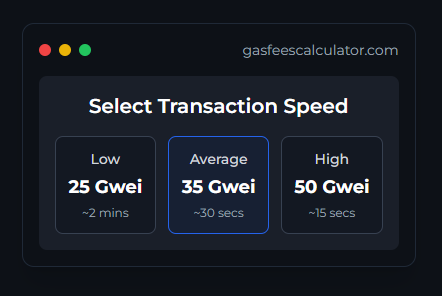
What are pulsechain gas fees?
PulseChain aims to be significantly cheaper than Ethereum, with gas fees measured in "beats," where 1 PLS equals 1,000,000,000 beats. The gas fee structure on PulseChain is influenced by network demand, transaction complexity, and the amount of computational work required. Just like Ethereum, when the network is congested, gas fees can increase due to competition for block space.
However, PulseChain has several optimizations in place, including faster block times (10 seconds instead of Ethereum's 12 seconds) and a higher total supply of PLS, which contribute to lower gas fees. PulseChain also implements fee burning to reduce the supply of PLS over time, potentially increasing the value of the remaining tokens.
Despite these efforts, gas fees on PulseChain can fluctuate, particularly during periods of high activity like token launches or major DeFi operations. Users should check current gas price indicators or use tools like the PulseChain Gas Estimator extension to get the most up-to-date information on gas fees before executing transactions.
Home » PulseChain » What Are PulseChain Gas Fees?
PulseChain. Spearheaded by Richard Heart, this initiative aims to revolutionize the blockchain space by introducing PulseChain gas fees—a critical component of this ambitious endeavor. In this comprehensive exploration, we will delve into what PulseChain gas fees entail, their significance, and how they are poised to reshape the decentralized finance (DeFi) landscape.
The Rise of PulseChain
Before we dive into the intricacies of PulseChain gas fees, it’s essential to understand the broader context of this blockchain platform.
PulseChain, often hailed as the brainchild of Richard Heart, represents a remarkable attempt to bring DeFi and smart contract capabilities to the Pulse Network. This initiative seeks to bridge the gap between Ethereum and the Pulse Network while ensuring competitive gas fees, a critical factor in the blockchain ecosystem. Transitioning from one network to another, PulseChain is positioned as a game-changer.
Understanding PulseChain Gas Fees
PulseChain gas fees are transaction costs incurred when interacting with the PulseChain blockchain. These fees are an integral part of any blockchain network, covering the expenses associated with validating and processing transactions. However, what sets PulseChain apart is its commitment to offering competitive and affordable gas fees.
One of the most remarkable aspects of PulseChain gas fees is their Ethereum compatibility. This feature is particularly appealing to those familiar with Ethereum’s ecosystem, as it enables a seamless transition to PulseChain. Users can leverage their existing knowledge and tools to navigate the PulseChain blockchain, minimizing the learning curve and maximizing convenience.
Competitive gas fees are a cornerstone of PulseChain’s vision. In the world of DeFi, high gas fees on platforms like Ethereum have been a significant hurdle for users. PulseChain aims to address this issue by offering gas fees that are both reasonable and competitive.
Transitioning can significantly reduce the cost of executing transactions and interacting with smart contracts. This affordability is a game-changer for DeFi enthusiasts, as it opens up new possibilities for conducting transactions and participating in decentralized applications.
PulseChain relies on a network of validators to process transactions and ensure the security and integrity of the blockchain. Validators play a vital role in maintaining the network’s decentralized nature, and they are compensated for their efforts through gas fees.
Transitioning from Ethereum to PulseChain
This transition not only enhances the security of the network but also ensures a fair compensation model for those who contribute to its operation.
To illustrate the impact of PulseChain gas fees, let’s consider a few practical scenarios where users can benefit from this cost-effective blockchain:
- DeFi Transactions: PulseChain offers a platform for decentralized financial services. Users can execute transactions related to lending, borrowing, and trading assets with significantly lower gas fees compared to Ethereum. This affordability makes DeFi more accessible to a broader audience.
- Smart Contracts: Interacting with smart contracts on PulseChain is cost-effective, making it an attractive option for developers and businesses looking to deploy and utilize blockchain-based applications. This affordability encourages innovation and adoption.
- Cross-Chain Transactions: PulseChain’s Ethereum compatibility facilitates cross-chain transactions, enabling users to move assets between Ethereum and PulseChain with minimal friction and cost. This interoperability is a significant advantage for those seeking flexibility in managing their digital assets.
For those considering a move to PulseChain, the transition process is designed to be straightforward and user-friendly. Users can employ their existing Ethereum wallets and tools to interact with PulseChain seamlessly. This interoperability simplifies the migration process, ensuring a smooth experience for all participants.
PulseChain Gas Fees and Tokenomics
A critical aspect of any blockchain project is its tokenomics—the study of how tokens function within the ecosystem. PulseChain’s native token, PLS, plays a pivotal role in the network’s gas fee structure.
This means engaging with the PLS token, which can be staked, traded, and used to pay gas fees. The availability of PLS tokens ensures that users have a means to cover transaction costs while participating in the PulseChain ecosystem.
As PulseChain continues to evolve and gain traction within the blockchain community, the future of PulseChain gas fees looks promising. This project’s commitment to affordable gas fees and Ethereum compatibility sets it apart from its peers, offering a robust alternative for those seeking cost-effective blockchain solutions.
In conclusion, PulseChain gas fees represent a significant step forward in the world of blockchain technology. With their Ethereum compatibility and commitment to affordability, PulseChain has positioned itself as a formidable player in the DeFi landscape.




